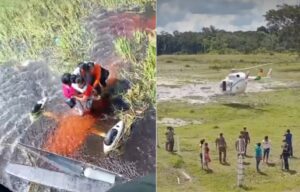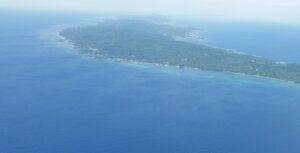Forget the TV shows Naked and Afraid and Survivor, or our modern caveman, Bear Grylls. A full century earlier, another reality star roamed the earth. His name was Joseph Knowles and he is remembered as both Nature Man and Naked Joe.
When Knowles first entered the Maine woods in 1913, close to the Canadian border, he was wearing nothing but a jockstrap. His daring display of showmanship was an experiment aimed to prove his ability to survive in the wild without tools, shelter, or provisions. Knowles claimed that he would finally put to rest the question of whether or not man had become “too soft” from modern living.
Scientists were curious to see how Knowles would fare. Harvard’s Physical Director, Dudley Sargent, publicly stated that “his attempt to live like a primeval man will have a scientific value; we will be interested to know how the lack of salt will affect Knowles.”
As part of the experiment, Knowles wrote daily accounts of his ordeal on birchbark with charcoal, which he left in pre-planned locations for weekly collection. These were then printed in the Boston Post. Like modern expeditions posting daily accounts on social media, these colorful dispatches gave his adoring public almost real-time insight into how he was faring. During those eight weeks, the public hung on every his word. He’d become a real-life superstar, relatable to everyday folk, taking part in something too daring for others to contemplate. He commandeered the headlines, later emerging in Megantic, Quebec, wearing a bearskin robe and birchbark sandals.
Hailed a hero, he’d seemingly proved that it was indeed still possible for man to survive in the wild. Or at least, that’s what the public thought before the truth of the experiment was revealed years later.
Into the woods
On the day that Knowles began the experiment, a swarm of reporters joined him at the edge of the forest. Photographers stood ready to capture the last glimpses of the man who was about to live primitively.
Knowles arrived respectably dressed in suit and tie, sucked back on a cigarette –- his last for the next two months –- and stripped down to his jockstrap. Then he melted away into the woods, leaving ordinary life behind.
Positioned some 50km from the nearest railway line, east of the Quebec border, he had privacy from passersby and was removed from city conveniences.
As soon as he was by himself, he removed his jockstrap and tossed it away, the better to experience “the full freedom of the life I was to lead,” he noted in one of his early birchbark dispatches. He then walked five kilometres to a lake where he was to spend most of his time.

Knowles wrote weekly reports of his survival with charcoal on birch bark. But after 11 days with no news, some people became suspicious.
It was raining, and a cold, barefoot Knowles’s first challenge was the slippery ground beneath his feet. He saw a deer in the distance; its hide could provide warmth and food if only he could hunt it. “She looked good to me,” he wrote, “and for the first time in my life, I envied a deer her hide. I could not help thinking what a fine pair of chaps her hide would make and how good a strip of smoked venison would taste a little later.” But among the few rules of his expedition, Knowles had to adhere to Maine’s game laws, and the hunting season had not yet begun.
Somewhat at a loss for what to do next, cold, alone, and unable to hunt, Knowles decided to put himself through a Tarzan-style exercise regime, including chin-ups on an overhanging tree branch.
This was an era of great adventure, after all. Edgar Rice Burroughs had created the fictional character, Tarzan, and President Roosevelt’s legacy centred around a culture of men remaining true to their manly heritage. A few chin-ups naked in the forest didn’t seem an odd thing to do, in the situation.
“On a strong spruce limb, I drew myself up and down, trying to see how many times I could touch my chin to the limb. When I got tired of this, I would run around under the trees for a while.” He was of course playing a romantic character inspired by Tarzan, ready to enthrall readers in the next Boston Post.

Knowles supposedly wore birchbark shoes during his two months in the wild.
On his second day, Knowles took a more proactive approach. He made a basket from birchbark to gather berries, speared two trout, and attempted to start a fire. His skills from years of working as a wilderness guide failed when a mink took off with both trout, leaving him hungry. He couldn’t start a fire either, since the wood was damp. So he remained cold and hungry on that second day too.
On his third day, things began to look up. Prioritizing warmth, Knowles sewed himself a pair of pants made of grass. He then built a dam across a small stream and successfully caught fish. On his fourth day, he even managed to create fire.
Then suddenly, his reports stopped.
For 11 days, not one birchbark dispatch made its way to the designated drops, and media reports began capitalizing on the silence. Headlines stirred ideas that he may have been injured or worse.
Then just when melodrama was spiking, a new report came. Plastered across the Boston Post’s front page was the headline, “Knowles Catches Bear in Pit and Kills It with Club”.
August is not bear season in Maine, however, so now Knowles was admitting that he broke the law. This opened a further opportunity for headlines, this time criticizing Knowles. Some suggested that he might try to flee the consequences by crossing the border into Quebec.
While the public continued to be enthralled in the experiment, some reporters were becoming suspicious. Wondering why Knowles was no longer leaving dispatches, one decided to tramp into the forest where Knowles had been. He returned claiming to have found blunt instruments and a small lean-to of branches and foliage, but no sighting of Knowles nor proof of the slain bear.
Finally, two mysterious months after he entered the wilderness, Knowles reemerged in Quebec’s Eastern Townships.

Knowles appeared in Quebec wearing a bearskin robe.
The first sightings saw a scruffy, bearded man clad in a bearskin. The bearskin was fashioned in robe style, cinched near the waist. His sandals were made from bark, as he’d described in his dispatches.
Game wardens escorted him to a doctor for a medical exam. When he returned to the U.S, 200,000 excited people gathered to greet him. Women wanted to court him, men praised him, and the papers went crazy. He was, after all, a man who had just “traversed the most inhospitable portion of the Maine woods,” as the Boston Post breathlessly put it.
Knowles gave a speech to an overzealous audience who could finally view in the flesh the character they’d followed in the news for the past two months. He didn’t disappoint, saying famously, “It is a whole lot easier being in the woods than it is making a speech.”
He was honored at a black-tie banquet at the Copley Plaza Hotel, which served only the finest gentlemen in town. Knowles then went on a five-month speaking tour, sharing his tale to adoring fans in exchange for $1,200 a week.
He later published a memoir called Alone in the Wilderness, which sold more than 30,000 copies. He even made it to Hollywood, where he was cast as the lead in the spinoff movie, also titled Alone in the Woods. Knowles was not only profiting from his two months in the Maine forest but he was becoming a celebrity at the same time.
But while Knowles raked in the money and the plaudits by proving that man could survive in the wild, a parallel story was unfolding. It suggested that the whole thing was a big con.
The Hartford Courant was the first to question Knowles’s claims. Another paper ran an even more damning editorial: “The biggest fake of the century has been palmed off on a credulous public,” it claimed.
A top investigative journalist from another Boston newspaper, Henry E. Redmond, then went into the woods to scour the area around the lake where Knowles supposedly spent most of his time. The resulting piece in the Boston American branded Knowles a liar.
In the article, Redmond detailed that the bear pit in which Knowles had allegedly killed the bruin was not big enough for anything of the kind to have happened. “It would have been physically impossible to trap a bear of any age or size in it,” he wrote. Furthermore, he suggested that the club lingering nearby, which Knowles supposedly used to kill the bear, was just a rotting stub with no power to harm anything.
Further investigation showed that Knowles’ bearskin had four bullet holes in it and had been purchased from a trapper for $12. Redmond discovered that instead of spending two months surviving on his own in the forest, Knowles had in fact been lounging around in a log cabin near the lake.
Knowles attempted to disprove the allegations, but it wasn’t working. In 1938 –- years after the accusations first surfaced — the matter was finally laid to rest: Michael McKeogh revealed the entire truth.
Knowles and McKeogh had worked together at the Boston Post, where Knowles had been a part-time illustrator until 1910. One day, the pair were drinking beer at the tavern they regularly frequented when they hatched a plan to write a story about a man who would spend two months surviving in the wild. With Knowles’ expertise in the wilderness, they decided that he’d be the best candidate. McKeogh would ghostwrite his dispatches.
Holed up in his log cabin by the lake, McKeogh answered the door to a jockstrap-wearing Knowles. This occurred as soon as the public were out of view, on the first day of the experiment. Knowles stayed in McKeogh’s cabin for much of that two months.
McKeogh didn’t just expose the lie that Knowles had profited from for years, he damned him in the process. He stated that Knowles had been a nightmare to live with, a lazy guest who overstayed his welcome and helped himself to McKeogh’s belongings.
It didn’t seem to matter that the lie was exposed. Like many a celebrity past and present, Knowles simply rode out the dishonor and continued to enjoy his celebrity status. He lived on the Long Beach Peninsula in Washington State until his death in 1942 at the age of 73.
Some of Knowles’s old sketches and other memorabilia can still be found at the Long Beach Peninsula Trading Post, serving as a lasting shrine to the man who brought off one of the greatest hoaxes of his time.






